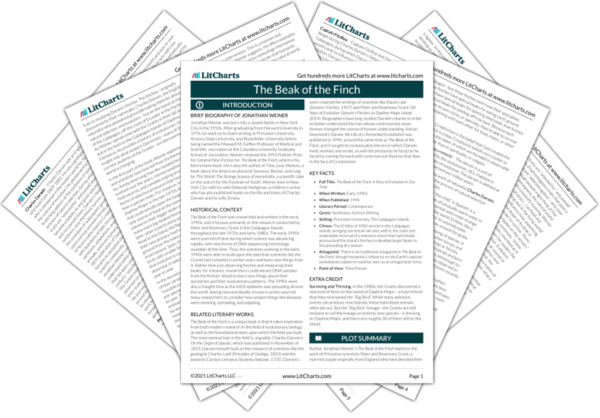Previous
Chapter 18
|
Previous
Chapter 18
|
The Beak of the Finch: Chapter 19 Summary & Analysis |
Next
Chapter 20
|


Upgrade to unlock the analysis and theme tracking for all of The Beak of the FinchThe Beak of the Finch!
Get LitCharts A+